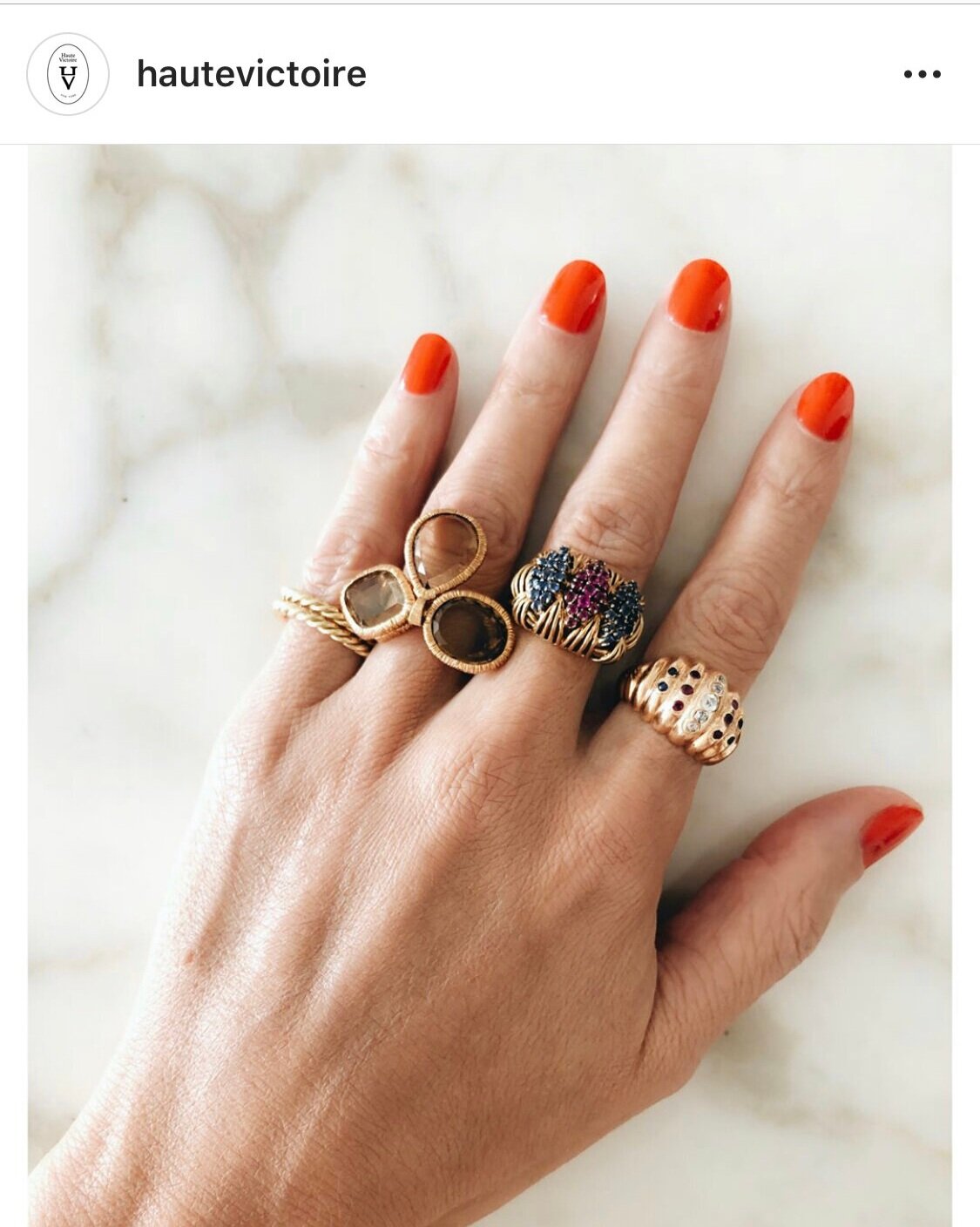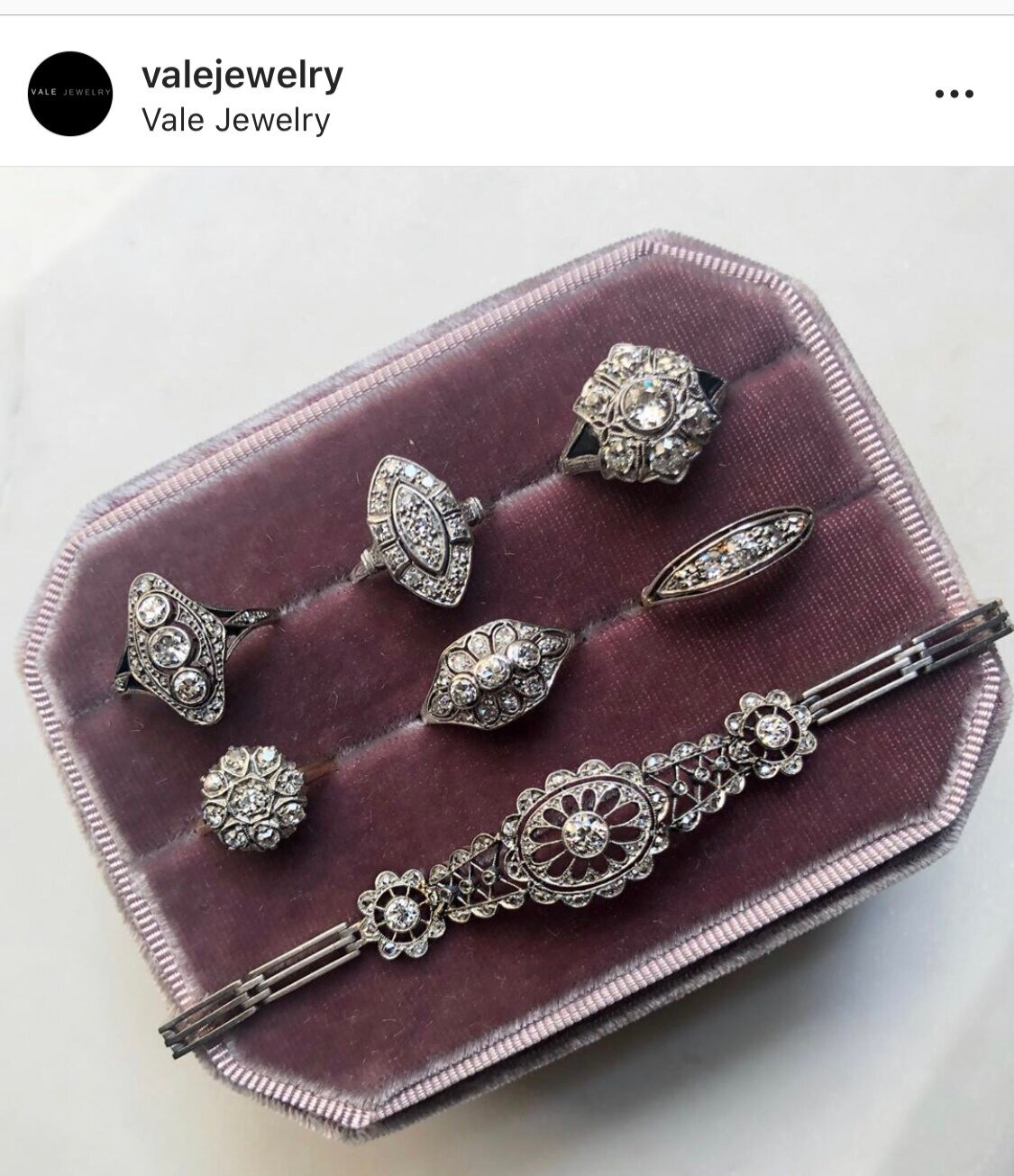How to Shop for Vintage Jewelry
Navigating the world of vintage doesn’t have to be intimidating
Two left: Cartier Right: Van Cleef & Arpels
Vintage jewelry has so many qualities I love. It makes me feel like I’m 7 years old again going through my mom’s jewelry box. I imagine digging to the bottom of the box to find the perfect bright gold brooch to go with the loud, geometric 80s print silk scarf I’ve draped around my shoulders like a cape, and the sensible beige pumps with a low chunky heel (you know the ones) that I’ve been shuffling around in to keep from toppling out the front.
Then there’s the history. Imagining the glamorous former lives of each piece is half the fun of vintage jewelry. And fantasizing about all of the untapped allure and mystique it will bring to your own life is the other half. For example, you never know when you will be whisked away on a romantic weekend getaway to Paris and will need a gumball sized cocktail ring to set the tone.
And there’s the sustainability factor of being able to give a second, third or fourth life to a piece, rather than turning to one newly created.
While vintage jewelry shopping should be fun, there can also understandably be some anxiety. Buying jewelry of any kind can be intimidating, but buying vintage jewelry can sometimes feel like you have to be a member of a special club. Like you need to be a certified gemologist carrying your loupe with you at all times, or a jewelry historian in order to look like you know what you’re talking about. But fear not, let’s address those worries head on. You got this!
What if I don’t get all of the stones, terms or periods right?
Look at it all as a learning opportunity, not like you have to walk in already knowing everything. But to help you feel like you have a solid foundation, let’s begin with the basics. What is the difference between antique and vintage jewelry? It’s easy to use the two interchangeably, but by definition, antique jewelry is over 100 years old and vintage is essentially older than 20 years.
To throw another term into the mix, ‘estate’ is used to cover it all; basically, it’s a fancy way of saying pre-owned. So, with that said, whenever the term estate is used, make sure you also understand what period the piece is from. It could be something that is ‘antique style’ or ‘vintage inspired,’ but because it was pre-owned, it’s being called estate even if it’s no more than 5 minutes old. I’m exaggerating, but you get the idea.
And then there are all of the periods. Wowza who can remember it all? There are so many resources that offer a wider window into these periods, and I’ve included some at the end, but here’s a quick visual guide to the different periods and their styles.
Image sources: Christie’s, Lang Antiques, 1st Dibs, Broken English, Macklowe Gallery
What if I get taken advantage of?
I’ve had the pleasure of connecting with some truly amazing vintage dealers with next level integrity, but that’s not always the case. I love this advice from Elizabeth Potts, founder of one of my favorite vintage jewelry sources, The Moonstoned (read more about her here). She says, “I think the most important thing is to trust your gut. It's really easy to be bamboozled into a fake vintage item and unfortunately, there are a lot of sellers out there who won't bat an eye. It's even happened to me; everyone makes mistakes. Be sure that you know the person you are buying from or at the very least, ask as MANY questions as you need to.”
Creating relationships and learning as much as you can are some of the most special elements of searching for your perfect vintage piece, so use it as an opportunity to really connect with the person you’re considering buying from. Ask them for the certificates to verify the authenticity and quality of the stones. And as Elizabeth says, if your intuition is telling you something is off, it probably is.
What if I’m not going to be spending thousands of dollars?
You can find vintage at all price levels depending on the stones, metals and other materials, level of craftsmanship and whether it is fine or costume jewelry. Some of my favorite pieces are the ones that cost the least.
I’ve included a range of vintage sources below, from the super high, to mid-level, to ones that also have a costume offer. In my opinion, searching for the special treasure that speaks directly to you, regardless of its price, is the fun part.
What if I pay too much, or my item loses value?
So, you’ve finally found your dream piece, but how do you know if the price is right? There are a number of elements that go into setting the price of a vintage piece. Consider the quality of the materials, the metals, stones, intricacy of design and its craftsmanship.
If you want to make sure you’ve done your due diligence, scour the first hand and vintage market for benchmarks with these elements in mind and get a sense for how things are priced. If it’s a signed piece, meaning it has the mark of its original maker, see how it compares to other pieces from the brand.
After you’ve done your homework, if you feel something is overpriced, walk away. Unless there’s something inexplicably pulling you towards the piece, in which case, is its emotional value greater than its financial value?
Elizabeth says, “I believe that an emotional connection to an item far outshines its weight in gold. With that being said, gold IS a great investment and if you are looking to purchase jewelry for the gold or diamond value just do your research, research, research.”
I love this philosophy because if you start from a place of pure love for a piece and it’s in your budget, that in itself is its value. If one day you go to resell it and you end up making a return, that’s the icing on the cake. And if not, well then at least you know you had a great love affair.
A few little Vintage Faves
A Few More Resources
Victorian| Belle Epoque | Art Nouveau | Edwardian | Art Deco | Retro | Mid-Century

































